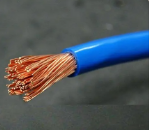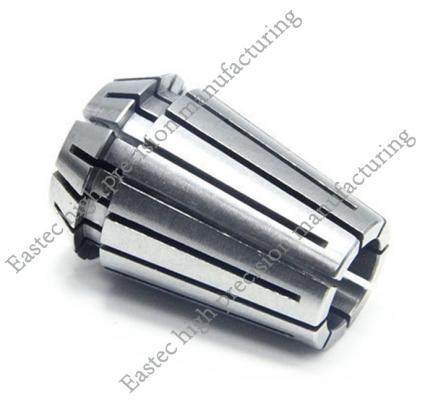Cold heading is widely used in the manufacturing process of fasteners such as bolts, studs, screws, and nuts, characterized by smooth operation, high precision, high production rate, and ease of automation.
The multi-station automatic cold heading machine uses the cold heading method to process disc blanks or bar stock through roller wheel feeding, sequential feeding, cutting, ball pressing, angle pressing, punching, and completes multiple processes in one machine. The cold heading stations are arranged horizontally, featuring accurate positioning, stable operation, and convenient maintenance. Below, we will briefly introduce the precautions for cold heading process in the manufacturing of fasteners.
(1) The connection between the crankshaft and the body, as well as the impact connecting rod, uses high-wear-resistant alloy copper tile connections, which have a large bearing capacity, long service life, and low maintenance cost.
(2) The body is made of ductile iron with added alloys, featuring high tensile strength and good wear resistance.
(3) The die material should be selected from high-hardness, high-wear-resistant alloy steel, such as Cr12MoV, SKD11, etc., to ensure that the die maintains precision and durability under long-term high-load operation. The design of the die should consider uniform stress distribution to avoid cracks or fractures caused by stress concentration.
(4) The feeding mechanism should have high precision and stability to ensure that the material does not shift or jam during transmission. Typically, servo motors are used in conjunction with high-precision ball screws and linear guides to achieve precise feeding control.
(5) The cutting mechanism should have fast response and high shearing force to ensure that the material does not produce burrs or deformation during cutting. Usually, hydraulic or pneumatic drives are used, paired with high-hardness cutting tools, to achieve fast and clean cuts.
II. Precautions for Cold Heading Process in Manufacturing Fasteners
Material Selection: The cold heading process requires materials with high plasticity, usually low carbon steel, medium carbon steel, or alloy steel. The chemical composition, mechanical properties, and surface quality of the materials should meet relevant standards to ensure no cracks, fractures, or surface defects during the cold heading process.
Die Design: The design of the die should consider the shape, size, and precision requirements of the product. The die cavity should be smooth to avoid stress concentration. The cooling system of the die should be designed reasonably to maintain a stable temperature after long-term operation, preventing die deformation or damage due to excessive temperature.
Process Parameters: The parameter settings of the cold heading process significantly affect product quality. Parameters such as cold heading force, speed, and number of times should be set reasonably based on the material properties and product shape. Excessive force can lead to material fracture, while insufficient force may result in incomplete product shapes.
Lubrication and Cooling: During the cold heading process, friction between the material and the die generates a significant amount of heat, requiring appropriate lubrication and cooling. The choice of lubricant should consider its lubricity, cooling properties, and environmental friendliness. The cooling system should ensure that the die and material maintain an appropriate temperature during the cold heading process to avoid mold damage or product defects due to overheating.
Quality Control: Quality control of the cold heading process should include inspection of raw materials, monitoring of process parameters, and testing of finished products. Inspection of raw materials should include chemical composition analysis, mechanical performance tests, and surface quality checks. Monitoring of process parameters should involve real-time monitoring of cold heading force, speed, and number of times. Testing of finished products should include dimensional accuracy, surface quality, and mechanical performance tests.
Equipment Maintenance: The maintenance of multi-station automatic cold heading machines is crucial for ensuring production efficiency and product quality. Regularly inspect all components of the equipment, especially the dies, feeding, and cutting mechanisms, to ensure they are in good working condition. Replace worn parts in a timely manner to avoid production interruptions or quality decline due to equipment failures.
Operator Training: Operators of the cold heading process should have a certain level of mechanical knowledge and operational skills. Regular training for operators should familiarize them with the equipment's operation procedures, process parameter settings, and quality control requirements to ensure the smooth progress of the production process.
III. Development Trends of Cold Heading Process
With the continuous development of industrial automation and smart manufacturing, the cold heading process is also advancing. The future of cold heading will focus more on efficiency, precision, and environmental friendliness. Efficiency is reflected in the increase in production rate and the reduction in energy consumption; precision is reflected in the improvement of product dimensional accuracy and surface quality; environmental friendliness is reflected in the eco-friendliness of lubricants and coolants, as well as the recycling of waste materials.
Intelligence: Future cold heading equipment will be more intelligent, equipped with functions for automatic detection, adjustment, and diagnosis. Through sensors and control systems, the equipment's operating status and process parameters will be monitored in real-time, automatically adjusting the cold heading force, speed, and number of times to ensure product quality stability.
Precision: With the increasing precision requirements for products, the cold heading process will focus more on precision. Through the design and manufacture of high-precision dies, combined with high-precision feeding and cutting mechanisms, the dimensional accuracy and surface quality of products will be improved.
Environmental Friendliness: Environmental protection is an important direction for the future development of the cold heading process. By using environmentally friendly lubricants and coolants, pollution to the environment will be reduced. At the same time, the recycling of waste materials will decrease resource consumption, achieving green manufacturing.
In conclusion, as an efficient and precise manufacturing method, the cold heading process has a broad application prospect in the field of fastener manufacturing. By continuously optimizing process parameters, improving equipment performance, and strengthening quality control, the cold heading process will play an even more significant role in future industrial production.





 Customer service 1
Customer service 1  Customer service 2
Customer service 2